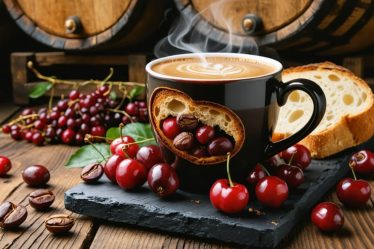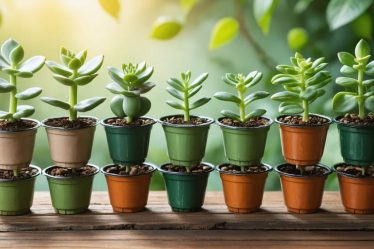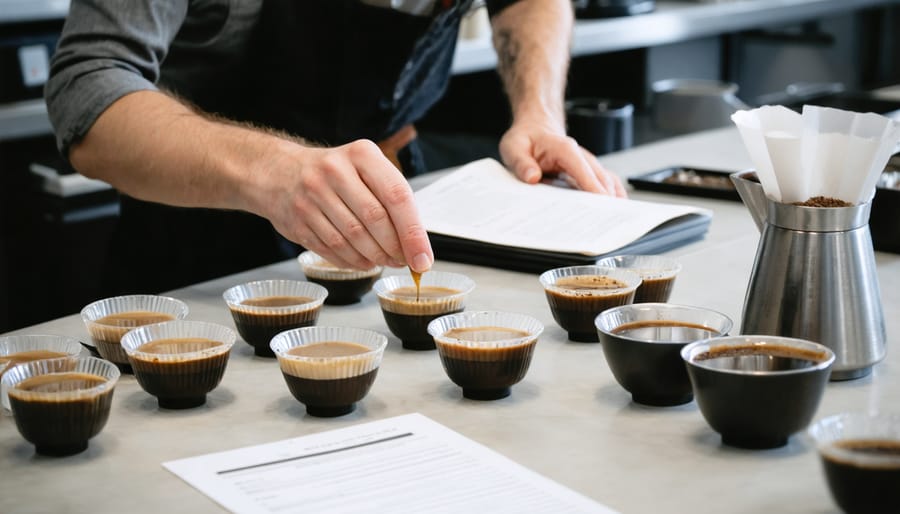
In the world of specialty coffee, Q Graders stand as the industry’s most respected taste experts – think of them as the sommeliers of the coffee world. These highly trained professionals undergo rigorous certification through the Coffee Quality Institute, mastering the art of detecting subtle flavor notes and quality variations that most coffee drinkers might miss. With only about 4,000 certified Q Graders worldwide, these experts play a crucial role in determining coffee quality standards, setting market prices, and ensuring that exceptional beans make their way from farm to your morning cup.
Through calibrated palates and standardized evaluation methods, Q Graders bridge the gap between coffee producers and consumers, helping to establish fair prices for farmers while guaranteeing that coffee lovers experience the best possible cup. Their expertise not only shapes the global coffee trade but also elevates our understanding and appreciation of coffee’s complex flavor profiles, making them instrumental guardians of coffee quality in an industry worth billions.
The Elite World of Q Coffee Graders
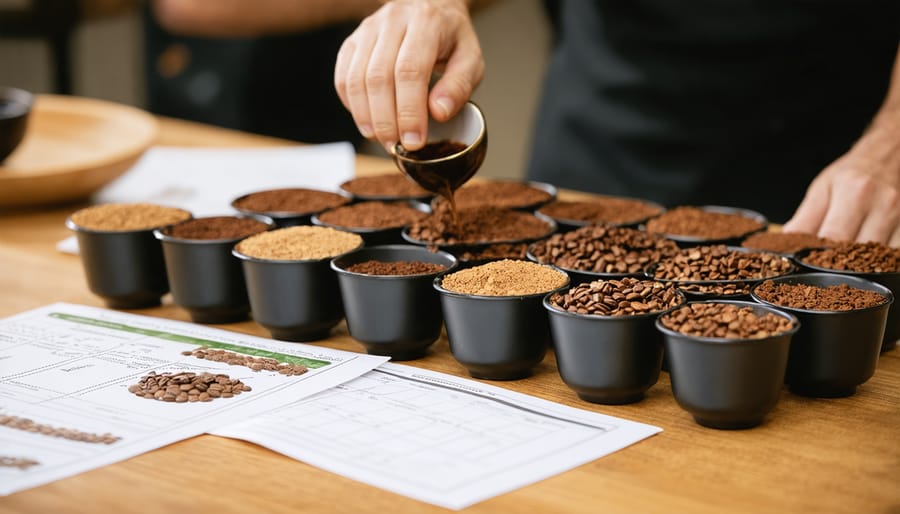
The Journey to Becoming a Q Grader
Becoming a certified Q Grader is like embarking on an exciting yet challenging adventure in the world of coffee. Think of it as earning a Ph.D. in coffee tasting! The journey typically begins with extensive preparation and study of coffee’s intricate characteristics, from its aromatic profiles to flavor notes.
The certification process, administered by the Coffee Quality Institute (CQI), involves a rigorous six-day examination period that tests every aspect of your coffee sensory skills. You’ll need to pass 22 different tests, including sensory skills, olfactory abilities, and cupping evaluations. Imagine identifying subtle differences between coffee samples and pinpointing specific aromas from tiny bottles – it’s quite the challenge!
Before diving in, most aspiring Q Graders spend months or even years working in the coffee industry, developing their palate and understanding of coffee production. Many start by taking foundational courses in coffee cupping and sensory analysis. The investment isn’t just time – there’s also a financial commitment for the courses and examination fees.
Don’t feel intimidated, though! With dedication and passion for coffee, this certification is absolutely achievable. Many successful Q Graders started exactly where you are now – simply loving and appreciating a great cup of coffee.
Why Q Graders Matter in Your Daily Cup
Ever wondered why some coffee shops consistently serve incredible coffee while others fall short? The secret often lies in the expert palates of Q Graders working behind the scenes. These coffee professionals are like your trusted friends who ensure you’re getting the best possible cup every morning. They meticulously evaluate coffee beans before they make it to your favorite café, checking for everything from sweetness and acidity to that perfect chocolate or fruity note you love.
Think of Q Graders as your coffee quality guardians, working tirelessly to maintain high standards across the industry. When you’re sipping that perfect morning brew, you’re experiencing the results of their careful selection process. Their trained expertise helps coffee roasters and shops maintain consistency, ensuring that your daily coffee ritual remains a delightful experience worth looking forward to.
Inside a Q Grader’s Tasting Process
The Art of Cupping
Picture yourself in a quiet room, surrounded by small cups of steaming coffee, each waiting to reveal its secrets. This is the world of professional coffee evaluation, where Q Graders perform their intricate dance of sensory analysis.
The art of cupping follows a precise protocol that transforms coffee tasting into a scientific process. First, we evaluate the fragrance of freshly ground coffee, then add hot water and wait for the perfect moment to break the crust – that magical instant when aromas burst forth, telling the first chapter of the coffee’s story.
Using specially designed spoons, we gently sip the coffee, letting it spread across our palates. We’re looking for specific characteristics: acidity (is it bright like a green apple or subtle like a ripe pear?), body (does it feel like skim milk or heavy cream?), and flavor notes that might range from chocolate and nuts to berries and citrus.
What makes cupping truly special is how it brings people together. In my years of practice, I’ve seen how this ritual creates connections, whether it’s professionals calibrating their palates or enthusiasts discovering new flavor dimensions. We take detailed notes, comparing our findings and learning from each other’s perspectives. It’s this combination of precision and community that makes cupping both an art and a science.
Remember, while the process may seem complex, at its heart, it’s about appreciating coffee’s wonderful diversity and sharing that joy with others.
The Coffee Flavor Wheel
Picture walking into a cozy coffee lab where Q Graders huddle around a table, speaking what seems like a secret language of flavors. They’re using what we in the industry call the Coffee Flavor Wheel – it’s like a colorful roadmap that helps us describe exactly what we’re tasting in each cup.
Think of it as a coffee lover’s dictionary that breaks down complex coffee flavor profiles into simple, relatable terms. Starting from the center, it branches out from basic categories like “fruity” or “nutty” into more specific descriptions like “blackberry” or “roasted hazelnut.”
When I first started training as a Q Grader, learning this wheel was like learning a new language. Instead of just saying “this coffee tastes good,” we can pinpoint exactly why – maybe it’s the hint of caramel sweetness or that wonderful orange blossom aroma that makes it special.
The beauty of the flavor wheel is how it creates a universal language for coffee professionals worldwide. Whether you’re in Seattle or Singapore, when a Q Grader describes a coffee as having “notes of dark chocolate with a hint of dried cherry,” everyone knows exactly what they mean. This standardization ensures that when you buy a coffee labeled with specific flavor notes, you can trust that description comes from a carefully trained palate.
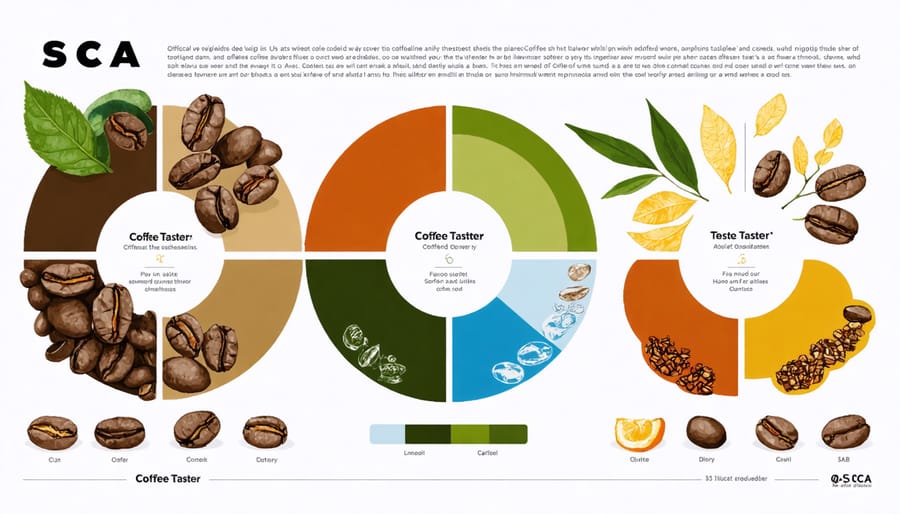
Developing Your Own Coffee Palate
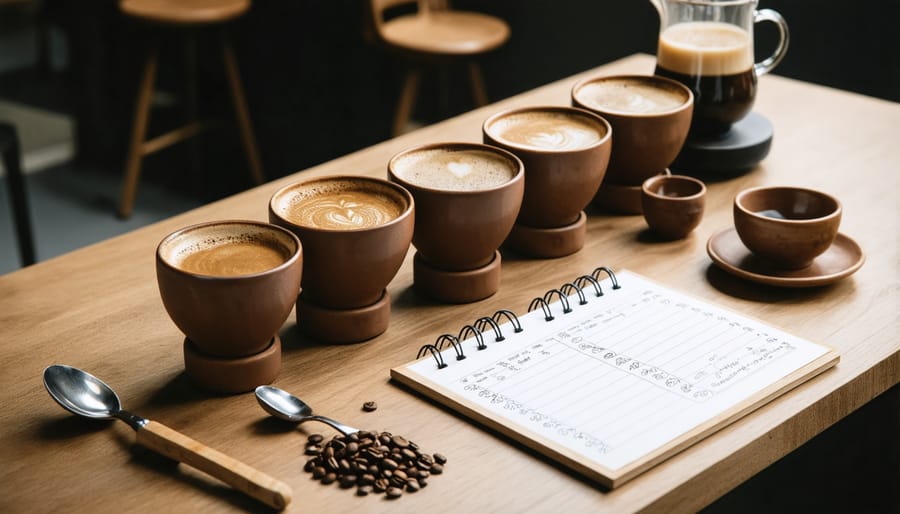
Simple Tasting Exercises at Home
Want to develop your coffee palate like a pro? I’ve got some fun and simple exercises you can try right at home! After years of chatting with Q graders, I’ve learned that training your taste buds is all about consistent practice and mindful tasting.
Start by gathering three different coffee varieties and storing coffee properly to maintain its freshness. Create your own mini cupping session by brewing small amounts of each coffee and arranging them in identical cups. Try to identify different flavor notes without looking at the packaging – you might surprise yourself!
Here’s a beginner-friendly exercise I love: Take a sip of coffee and focus on where you feel the flavors on your tongue. Is it bright and acidic at the tip? Rich and bitter at the back? Write down your observations in a coffee journal.
Another great practice is the contrast test. Brew the same coffee at different temperatures and notice how the flavor profile changes. Or try comparing light and dark roasts side by side – you’ll start picking up subtle differences in body, acidity, and sweetness.
Remember, there’s no right or wrong in taste perception. The goal is to build awareness and vocabulary for describing what you experience. With regular practice, you’ll develop a more refined palate and greater appreciation for your daily brew.
Common Flavor Notes to Look For
When I first started exploring coffee tasting, I was amazed by how many different flavors you can discover in a single cup! Let me share some of the most common flavor notes that even beginners can start identifying.
First, there’s the familiar nutty family – think almonds, walnuts, and hazelnuts. These are often found in medium roasts and make a great starting point for training your palate. Then, you’ll notice the sweet notes: caramel, chocolate, and vanilla are particularly common and easy to spot, especially in darker roasts.
Fruit notes are another exciting category to explore. Light roasts often feature bright, citrusy flavors like lemon or orange, while medium roasts might reveal berry or stone fruit notes. Some coffees even have distinct apple or grape characteristics!
Don’t forget about floral notes – jasmine and rose are particularly common in lighter roasts from certain regions. You might also pick up on spicy notes like cinnamon or nutmeg, which add wonderful complexity to the cup.
When you’re just starting out, try focusing on these broader categories rather than specific flavors. Ask yourself: Is it nutty? Fruity? Floral? This approach makes it less overwhelming and helps build your confidence in identifying flavors. Remember, there’s no wrong answer – everyone’s palate is unique!
Q Coffee Graders truly are the unsung heroes of our daily coffee ritual, bridging the gap between coffee farmers and our morning cups with their exceptional expertise and dedication. Their trained palates and deep understanding of coffee nuances help ensure that only the finest beans make their way to our homes and favorite cafes.
As someone who once thought coffee was just coffee, I’ve come to appreciate how these skilled professionals enhance our coffee experience. They’re not just tasting for pleasure – they’re safeguarding quality, supporting fair trade practices, and helping create the perfect brew we all love to wake up to.
Whether you’re a casual coffee drinker or an aspiring connoisseur, I encourage you to explore the world of coffee tasting. Start by noting the aromas, flavors, and textures in your daily cup. Visit local roasteries, join tasting sessions, and don’t be afraid to ask questions. While we may not all become certified Q Graders, developing a deeper appreciation for coffee can transform our daily ritual into something even more special.
Remember, every exceptional cup of coffee you’ve enjoyed has likely passed through the discerning evaluation of a Q Grader. Their expertise helps ensure that your coffee journey is always delightful, one cup at a time.

